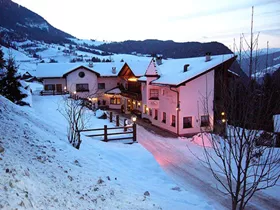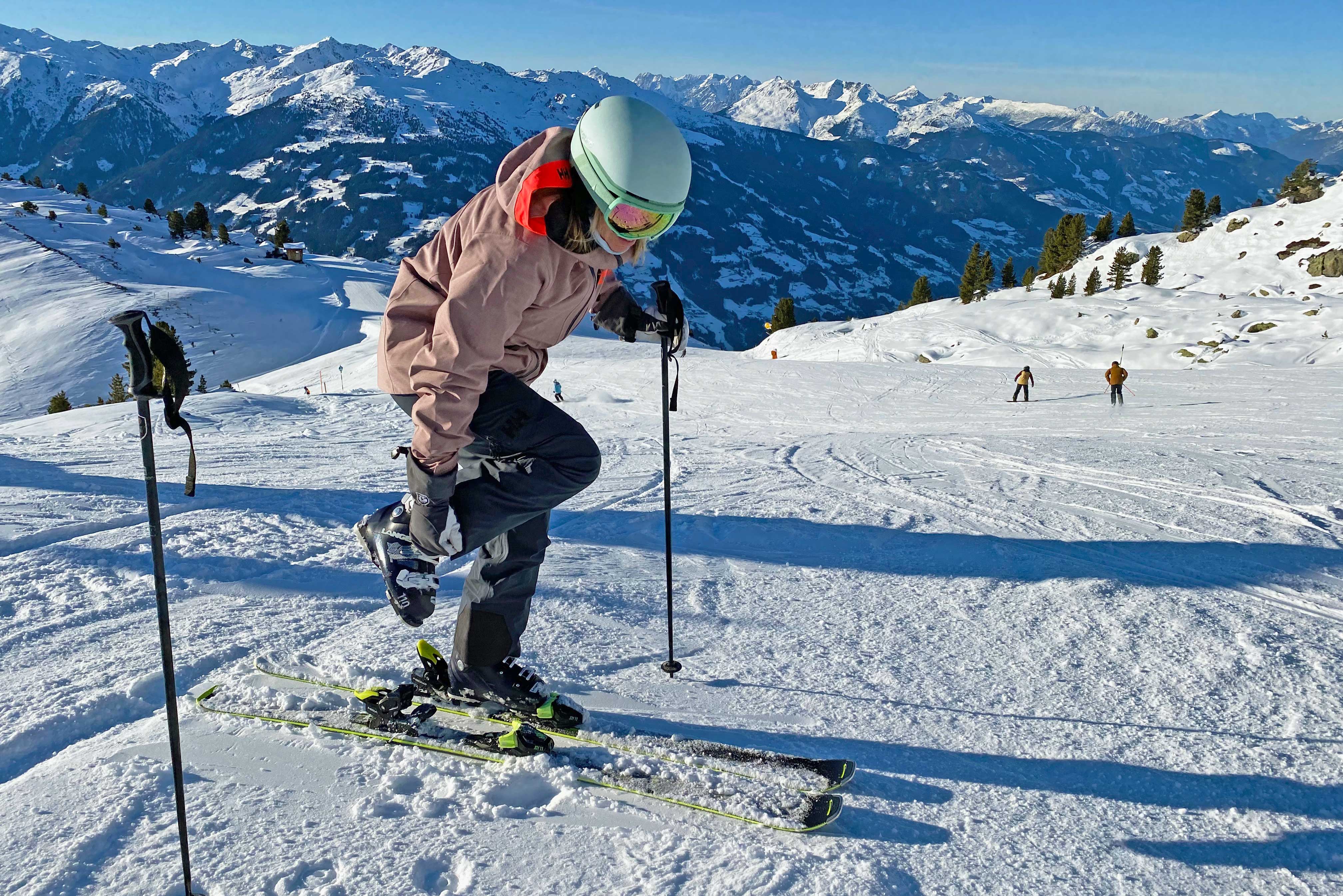
www.all-free-photos.com
Whether there is snow or ice on the road, being faced with a potentially slippery surface makes any normal driver anxious. Add having to negotiate hairpin bends with no safety barriers and your ski holiday is bound to get off to a bad start! However, it doesn’t have to be this way…
People who drive daily in the mountains have clocked up a lot of experience and knowledge of the real danger which exists when driving in severe winter conditions. We went up the mountains to get some tips from the locals.
Snow or winter tyres
When the outside
temperature
drops below 7°C and there is either fresh or old snow or ice on the roads, snow tyres, also known as contact or winter tyres, becomes essential. Snow tyres are made of a particular type of rubber that remains soft even when it is very cold. Snow tyres are designed to push snow away and grip on ice thanks to their numerous miniature suction cups. To give you an example of the difference they can make, a car equipped with snow tyres driving at 80km/h on snow will stop within 70 meters while it will continue as far as 112 meters using conventional tyres.
Whether you have a four-wheel drive, traction or propulsion vehicle, you must fit all 4 wheels of your car with these specially adapted tyres. Failure to do so will dramatically affect the balance and will make your car unstable and you put yourself and your passengers in danger.
Snow tyres will be beneficial throughout the winter at home in the UK too as they reduce skidding in any type of wet or icy conditions, so you can consider them a very good investment.
Snow chains
After heavy snowfalls in the European mountains, snow chains are often compulsory to access high ski resorts. If you see a sign like the one shown and the roads are snowy, you should think about stopping and kitting up! Check with your travel company or holiday rep before you leave to find out which regulations apply to your ski holiday destination – hitch-hiking the last 20km with your luggage will not be a great way of starting your ski holiday! Don’t forget to also check with your insurer as they may have specific requirements for driving in European mountains in the winter.
This may seem like an obvious thing to say but, make sure you buy chains adapted to your car’s tyres! Don’t borrow some from a friend thinking that they will do! Another piece of advice is to practice fitting your snow chains before you leave as, depending on the design, they are not the easiest equipment to fit! Make sure you have a decent pair of waterproof gloves (not mittens) as in minus temperatures with the wheel arches full of snow, fingers will become a little less agile and tempers might mount! A torch is handy too in case you’re travelling in the dark!
If you hire a car, check that it will be fitted with snow tyres and/or that there are snow chains in the boot!
Change your driving technique
In the event that you are taken by surprise and/or are not equipped when the weather closes in, then it goes without saying that you need to adapt your speed and double your safety distance with vehicles ahead.
Do not make any brisk movements when turning the steering wheel and accelerate gently and gradually. Look much further ahead and anticipate as early as possible when you will need to brake and use your gears to slow down rather than your foot or hand brake.
If
fresh snow
is falling on already snowy or icy roads while you’re driving, don’t be tempted to drive in other cars’ tracks. Fresh, untouched snow will give you more traction than compacted snow on an already slippery surface. And watch out for black ice which is most commonly found in shaded areas!
If, regardless of following the advice above, you feel the front or rear of your vehicle starting to skid, do not brake! Use the neutral gear position so that the wheels can turn at the same speed, and steer through the skid by looking ahead of you where you WANT to go. Hopefully the car will straighten itself out…
Learning from the pros!
Watching the Andros Trophy on TV is just not enough! So why not follow a training course organised by one of the many driving schools that propose lessons on driving in winter conditions in the ski resorts (that’s if you make it to your resort!) The courses are inevitably expensive, but probably less than having to repair your vehicle or be rescued from a ditch. Might make a nice surprise for a birthday too!
Homeward bound
For the return journey, if the weather conditions are bad, then allow extra time and make sure you clear ALL the car windows (inside AND out) - not forgetting wing mirrors of course - as on mountain roads you need to see all angles from the driver's seat! Top up your windscreen washer bottle with washer fluid with anti-freeze and make sure the car is full of snacks and drinks! Bonne route…
Leave a comment or join us on
Facebook
if you'd like to share any winter driving stories...
www.all-free-photos.com
Whether there is snow or ice on the road, being faced with a potentially slippery surface makes any normal driver anxious. Add having to negotiate hairpin bends with no safety barriers and your ski holiday is bound to get off to a bad start! However, it doesn’t have to be this way…
People who drive daily in the mountains have clocked up a lot of experience and knowledge of the real danger which exists when driving in severe winter conditions. We went up the mountains to get some tips from the locals.
Snow or winter tyres
When the outside
temperature
drops below 7°C and there is either fresh or old snow or ice on the roads, snow tyres, also known as contact or winter tyres, becomes essential. Snow tyres are made of a particular type of rubber that remains soft even when it is very cold. Snow tyres are designed to push snow away and grip on ice thanks to their numerous miniature suction cups. To give you an example of the difference they can make, a car equipped with snow tyres driving at 80km/h on snow will stop within 70 meters while it will continue as far as 112 meters using conventional tyres.
Whether you have a four-wheel drive, traction or propulsion vehicle, you must fit all 4 wheels of your car with these specially adapted tyres. Failure to do so will dramatically affect the balance and will make your car unstable and you put yourself and your passengers in danger.
Snow tyres will be beneficial throughout the winter at home in the UK too as they reduce skidding in any type of wet or icy conditions, so you can consider them a very good investment.
Snow chains
After heavy snowfalls in the European mountains, snow chains are often compulsory to access high ski resorts. If you see a sign like the one shown and the roads are snowy, you should think about stopping and kitting up! Check with your travel company or holiday rep before you leave to find out which regulations apply to your ski holiday destination – hitch-hiking the last 20km with your luggage will not be a great way of starting your ski holiday! Don’t forget to also check with your insurer as they may have specific requirements for driving in European mountains in the winter.
This may seem like an obvious thing to say but, make sure you buy chains adapted to your car’s tyres! Don’t borrow some from a friend thinking that they will do! Another piece of advice is to practice fitting your snow chains before you leave as, depending on the design, they are not the easiest equipment to fit! Make sure you have a decent pair of waterproof gloves (not mittens) as in minus temperatures with the wheel arches full of snow, fingers will become a little less agile and tempers might mount! A torch is handy too in case you’re travelling in the dark!
If you hire a car, check that it will be fitted with snow tyres and/or that there are snow chains in the boot!
Change your driving technique
In the event that you are taken by surprise and/or are not equipped when the weather closes in, then it goes without saying that you need to adapt your speed and double your safety distance with vehicles ahead.
Do not make any brisk movements when turning the steering wheel and accelerate gently and gradually. Look much further ahead and anticipate as early as possible when you will need to brake and use your gears to slow down rather than your foot or hand brake.
If
fresh snow
is falling on already snowy or icy roads while you’re driving, don’t be tempted to drive in other cars’ tracks. Fresh, untouched snow will give you more traction than compacted snow on an already slippery surface. And watch out for black ice which is most commonly found in shaded areas!
If, regardless of following the advice above, you feel the front or rear of your vehicle starting to skid, do not brake! Use the neutral gear position so that the wheels can turn at the same speed, and steer through the skid by looking ahead of you where you WANT to go. Hopefully the car will straighten itself out…
Learning from the pros!
Watching the Andros Trophy on TV is just not enough! So why not follow a training course organised by one of the many driving schools that propose lessons on driving in winter conditions in the ski resorts (that’s if you make it to your resort!) The courses are inevitably expensive, but probably less than having to repair your vehicle or be rescued from a ditch. Might make a nice surprise for a birthday too!
Homeward bound
For the return journey, if the weather conditions are bad, then allow extra time and make sure you clear ALL the car windows (inside AND out) - not forgetting wing mirrors of course - as on mountain roads you need to see all angles from the driver's seat! Top up your windscreen washer bottle with washer fluid with anti-freeze and make sure the car is full of snacks and drinks! Bonne route…
Leave a comment or join us on
Facebook
if you'd like to share any winter driving stories...
















